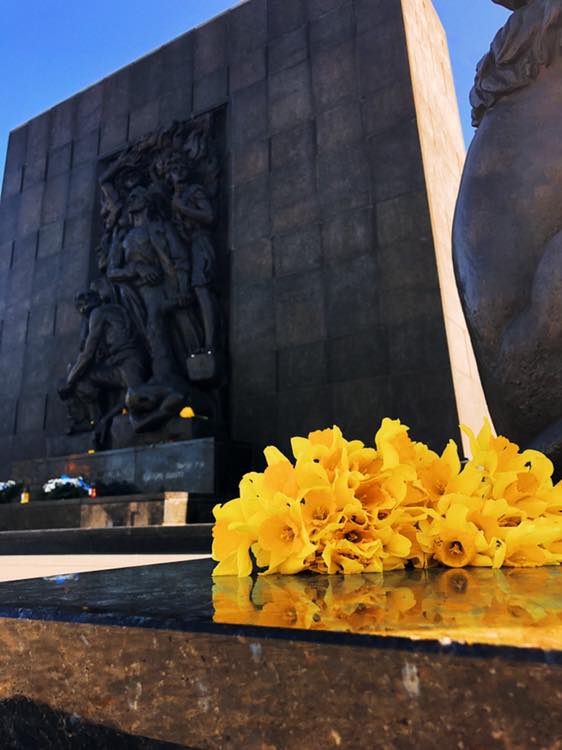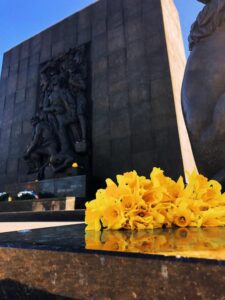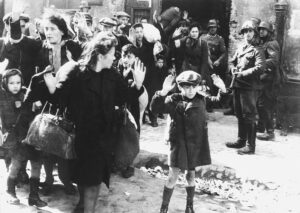Commemoration of the 78th anniversary of the Warsaw Ghetto Uprising
Today marks the 78th anniversary of the Warsaw Ghetto uprising. It is a day that brought together, for the first time, the Foreign Ministers of Poland and Israel, Zbigniew Rau and Lt. Gen. (ret.) Gabi Ashkenazi to commemorate the historic event.
At the invitation of ELNET (European Leadership Network), this year’s anniversary united more than fifty Polish and Israeli ambassadors in EU member states and countries around the world to take part in the Daffodil Campaign. ELNET is a non-profit organization dedicated to strengthening relations between Europe and Israel.
Because of Covid-19 restrictions, the event was held virtually. In Rome, ambassadors Anna Maria Anders and Dror Eydar took part in the act of remembrance. (see photo below)
Participants wore paper daffodils and posed for photos holding daffodil bouquets as a symbolic gesture of remembrance and solidarity.
The event was organized by the POLIN Museum of the History of Polish Jews. The Daffodil Campaign was created nine years ago. According to the POLIN Museum, the flower became the chosen symbol for the campaign following the death of Marek Edelman in 2009. He was the last surviving leader of the Warsaw Ghetto Uprising.
Every year on April 19, Edelman would receive a bouquet of yellow daffodils from an anonymous person. Each year, he would lay the flowers at the Monument to the Warsaw Ghetto Heroes in memory of the events in the spring of 1943 and to honour those who fought in the uprising.
The annual campaign is an opportunity to raise awareness, pay tribute to the brave men and women of the Warsaw Ghetto and commemorate their memory and sacrifice during the revolt.
In the summer of 1942, German forces herded and confined some 500,000 Jews into the “Warsaw Ghetto”, an area encompassing about 840 acres. Each day, thousands of Jews were shipped to Treblinka, an extermination camp. Each month that passed, thousands more perished from starvation and disease in the ghetto.
For months, the deaths and deportations continued. Of those who remained, their despair transformed into a determination to take back control of the ghetto.
The April 19, 1943 uprising was the largest Jewish resistance against the German forces in the Nazi-occupied city during WWII. It was a heroic act of defiance in the face of impending annihilation.
The resistance fighters held out for nearly one month, but on May 16, 1943, the revolt ended. German forces destroyed the Great Synagogue and reduced the Warsaw Ghetto to rubble, signaling the end of the uprising.
While the true number of casualties are unknown, of the 56,000 Jews captured, 7,000 were shot. The remainder were deported to death and forced-labour camps.
Feature photo: Warsaw Ghetto Uprising Monument C/O POLIN Museum of the History of Polish Jews







